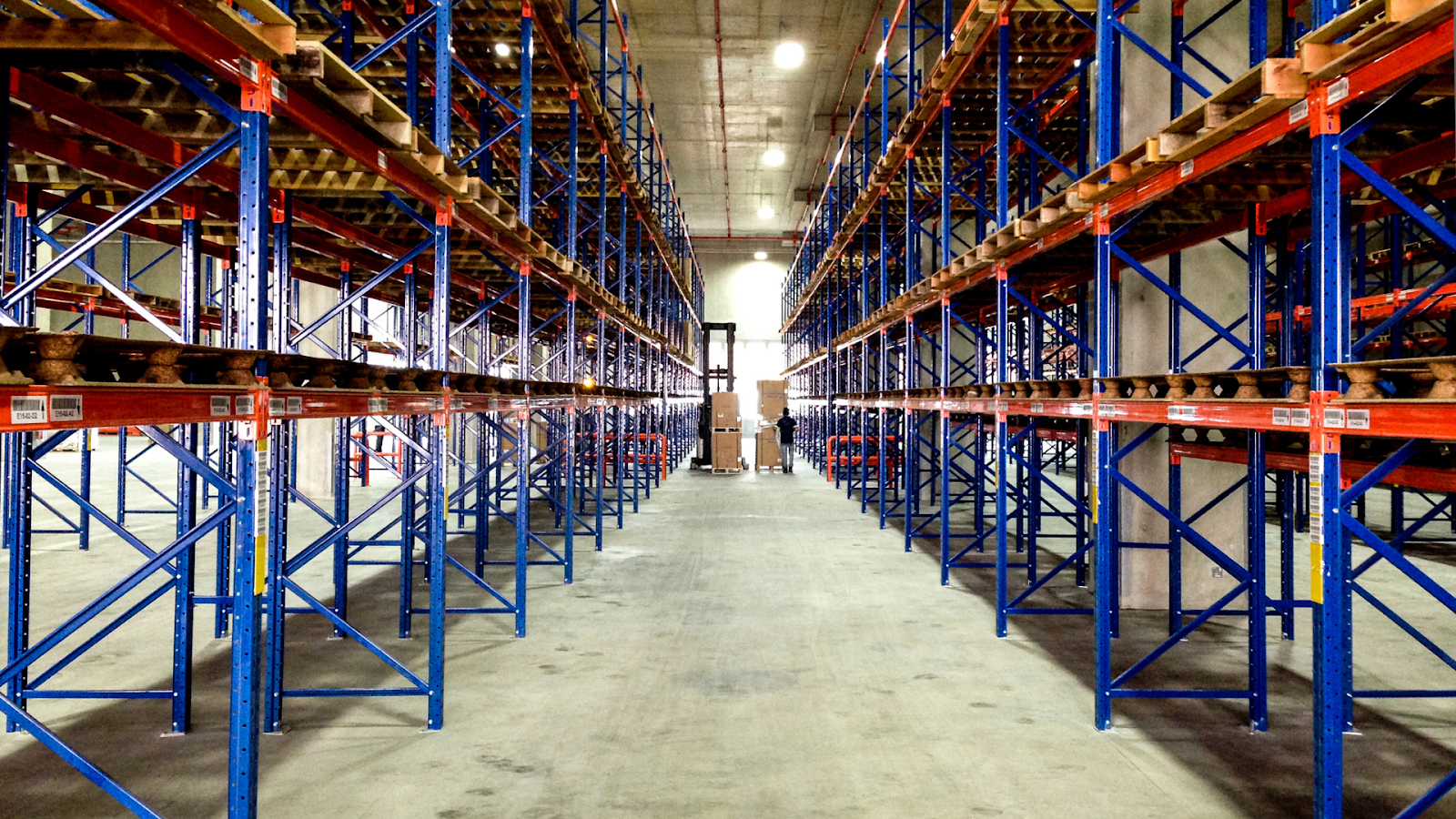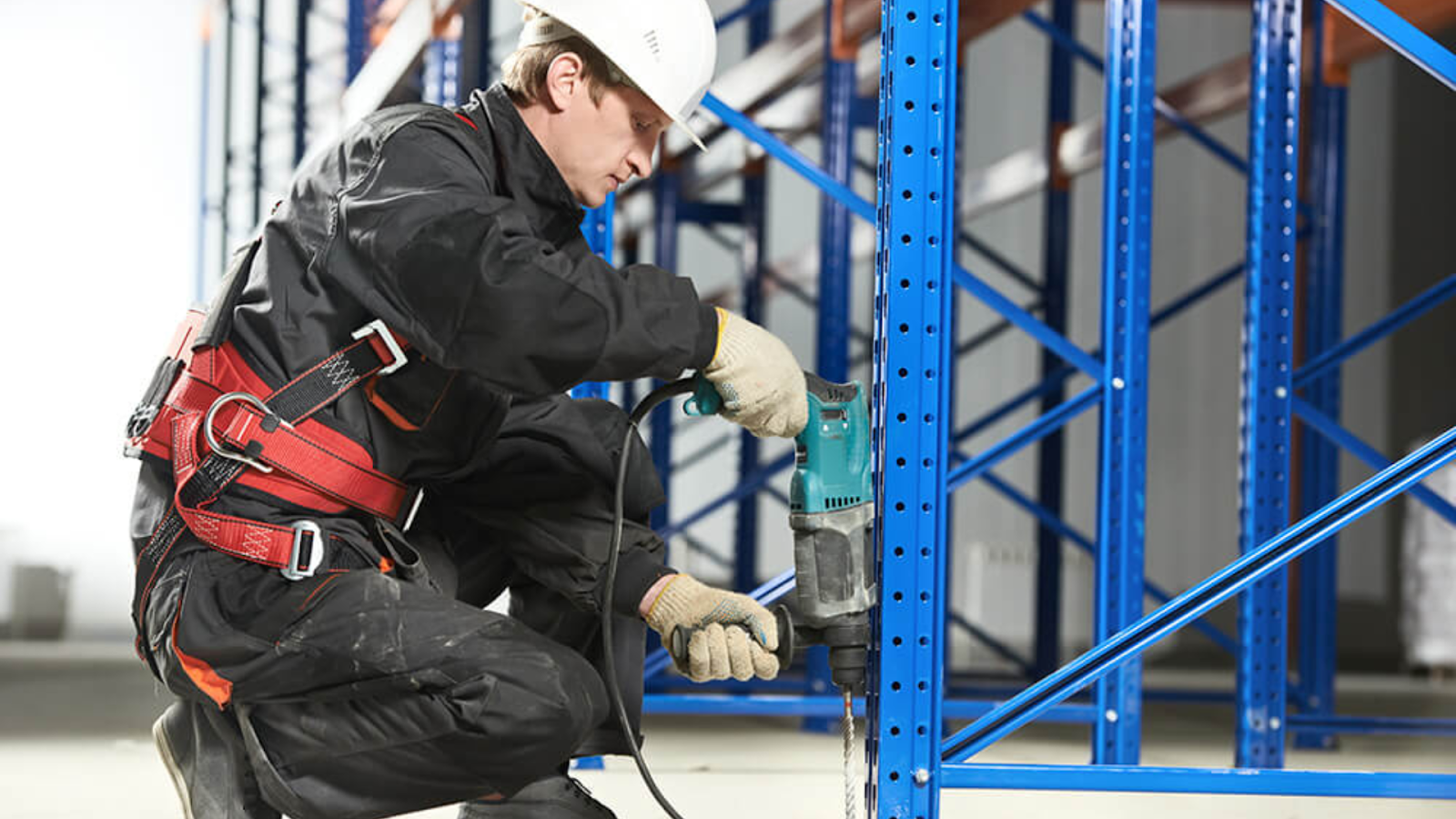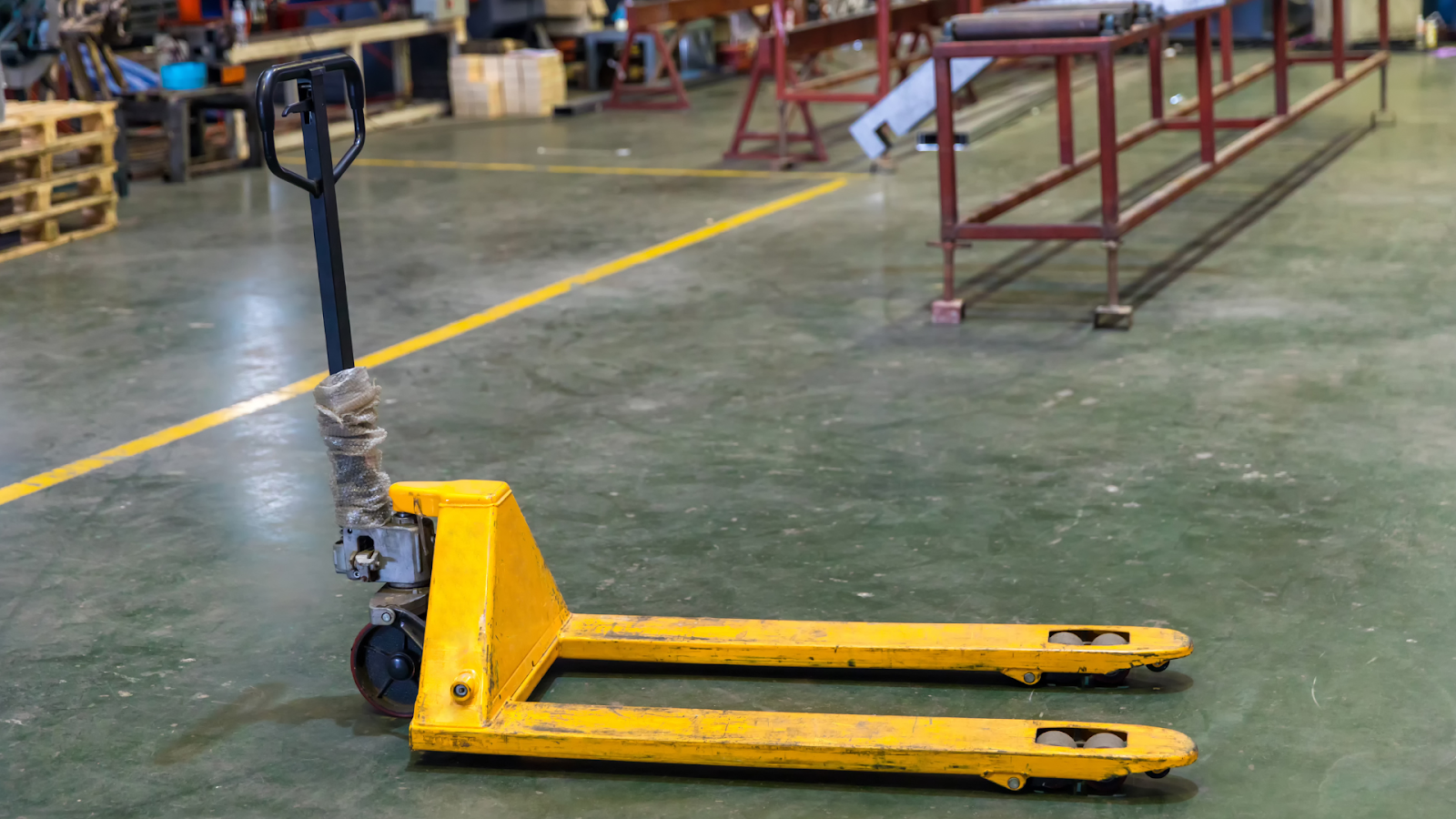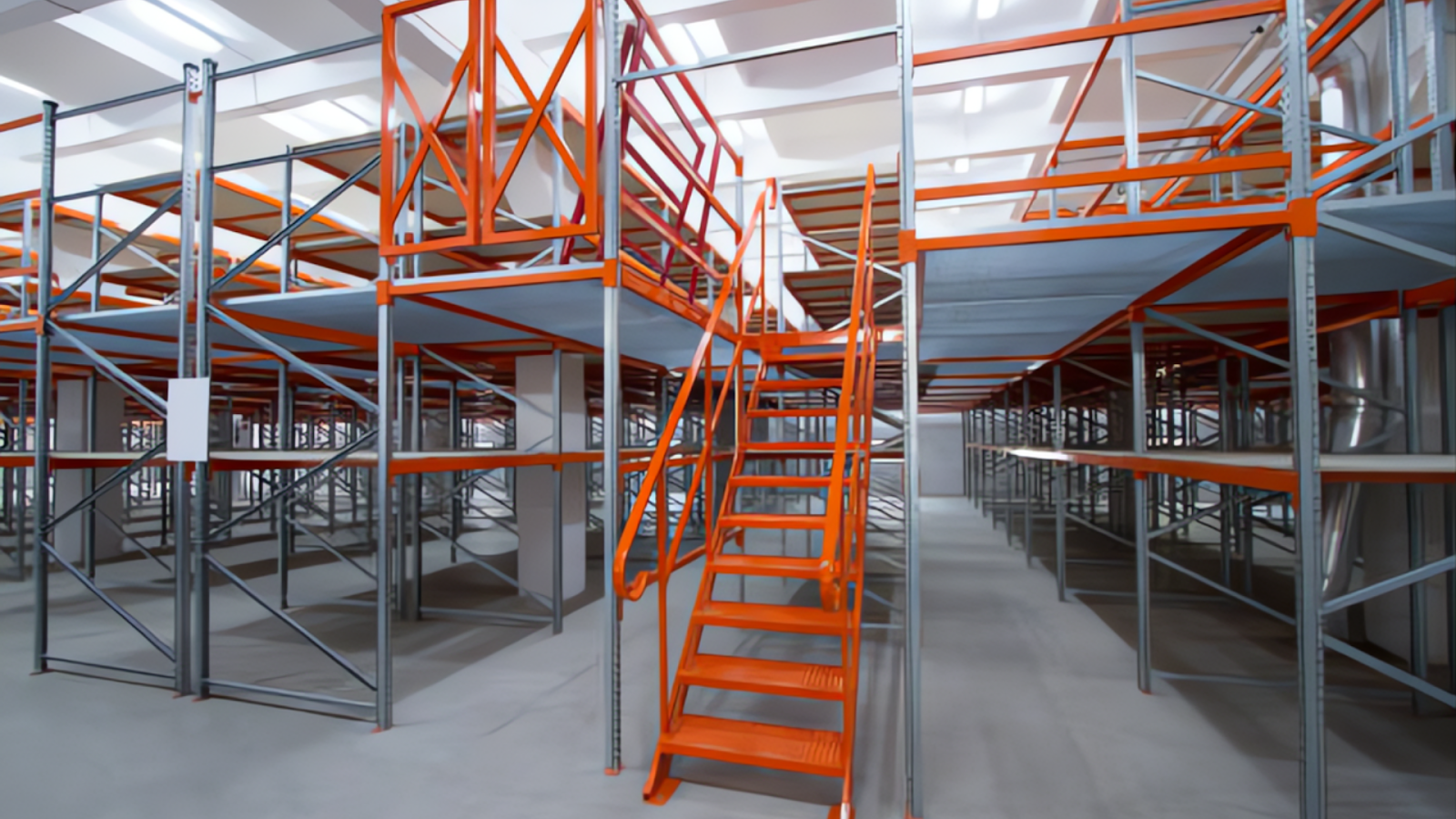Pallet rack anchoring is important for both safety and efficiency in your warehouse. When racks are securely anchored, they prevent dangerous accidents like tip-overs or collapses that could cause property damage, injuries, or even fatalities.
The stability of your entire pallet racking system depends on correct installation and regular maintenance. Without proper anchoring, the safety of workers and the integrity of the warehouse are at risk.
This blog will walk you through everything you need to know about anchoring pallet racks safely, from choosing the right anchors to installation, compliance with safety standards, and keeping your system in top condition.
Quick Overview
Pallet racks are integral to warehouse storage and material handling. Without secure anchoring, the entire system becomes unstable. A common issue warehouses face is rack instability, which can lead to disastrous collapses.
For example, in 2020, workers in material moving occupations accounted for 218 fatal accidents, or about 5% of all workplace fatalities. Improperly anchored racks pose significant risks, leading to potential injuries and substantial property damage.
Anchor installation is therefore essential not just for safety, but for ensuring that the entire warehouse operates efficiently and without risk.
In addition to safety concerns, pallet rack anchoring is a legal requirement. OSHA mandates secure anchoring for all racking systems under its warehouse safety standards, citing that unsecured racks pose significant risks to both workers and inventory.
The failure to adhere to these regulations can lead to hefty fines, legal liabilities, and, worst of all, workplace accidents.
Additionally, the National Fire Protection Association (NFPA) and Rack Manufacturers Institute (RMI) also emphasize the importance of anchoring, ensuring racks meet both safety and fire safety standards.
Also Read: Stop Wasting Time: How the Right Shelving & Racks Can Boost Your Business Efficiency

To ensure your racks stay firmly anchored, it’s important to select the right type. Below are the anchors engineered for maximum reliability in any warehouse setting:
Mechanical anchors, such as wedge and screw anchors, are commonly used to secure pallet racks to concrete floors. They offer robust holding power and are relatively simple to install. Here’s a look at these key mechanical anchors:
Chemical anchors use epoxy or resin to bond the anchor to the concrete, providing a strong and durable hold. They are ideal for environments exposed to moisture or high temperatures. Here’s a look at these key chemical anchors:
As warehouse needs evolve, so do anchoring systems. Innovative anchors are designed for high-stress applications and heavy-duty environments. Here’s a look at two key innovative anchors:

To ensure your pallet racks are securely anchored, follow these essential steps for preparation, installation, and testing. Each step is important for stability and safety in your warehouse setup.
To begin with, evaluate the floor type and inspect for cracks or debris.
Ensure anchors are embedded 1.5 to 3 inches deep with proper spacing (4 to 6 feet apart) for even weight distribution and maximum stability.
Measure and clearly mark anchor locations to guarantee the racks align properly and ensure secure, even load distribution.
Drill holes to the correct depth and diameter, matching anchor specifications, to ensure a strong, secure hold in the concrete.
Insert and tighten anchors securely, making sure they sit flush against the rack base for a firm, stable hold.
After installation, test the rack’s stability by applying pressure. If any movement occurs, adjust and retighten the anchors until fully secure.
Also Read: What to Look for When Buying Pallet Racking (And What to Avoid)

To ensure your pallet racks are secure, it’s essential to choose anchors that can handle the load. Consider factors like load expectations, material strength, and yield points to guarantee stability and safety. Here's what you need to ensure:
To ensure safety and compliance, pallet rack anchoring must meet OSHA and other industry standards. These regulations prevent accidents and ensure proper installation and maintenance.
OSHA standards specifically require that pallet racks be anchored to the floor to prevent collapse. Their regulations ensure that the entire warehouse system is secure and compliant with safety laws.
Failing to comply with OSHA's anchoring requirements could result in penalties and increased risk of accidents. OSHA 1910.176(a) outlines the safety measures for warehouse racks, emphasizing the need for secure installation and regular inspections.
In addition to OSHA, several other organizations set standards for rack anchoring. The RMI (Rack Manufacturers Institute) provides specific guidelines for anchor installation and load capacity.
Besides, ANSI (American National Standards Institute) also outlines safe practices for pallet racking systems, helping companies maintain compliance with national safety standards.
Regular pallet rack inspections and proper maintenance are the most effective ways to prevent rack failures. Anchors can loosen, metal can fatigue, and environmental factors can compromise stability over time. Here’s what to do:
Regular inspections help identify anchor looseness, rust, cracks, or shifting racks early. Doing so can help in preventing accidents and costly downtime. Early detection keeps your warehouse running safely.
The more active the warehouse, the more frequent the inspections should be. High-traffic or heavy-load areas may require checks every three to six months to maintain optimal safety.
Employ torque wrenches, visual checks, and stability tests to ensure anchors are secure. Effective inspection methods highlight problems before they affect rack performance.

To protect your workers and prevent rack damage, secure your pallet racks with properly installed anchors. Unstable racks are a serious hazard. They can tip over, spilling products and injuring employees.
Anchoring racks keep them stationary, preventing dangerous falls or shifts during regular operations. In areas with high forklift activity, reinforce stability further by adding protective barriers or guardrails.
These features prevent collisions that could destabilize the racks and keep both workers and inventory safe. By combining anchoring with safety barriers, you create a controlled, secure warehouse environment that minimizes accidents and boosts operational efficiency.
The stability of pallet rack anchors isn’t determined by the anchor alone, as floor and soil conditions play a critical role. Concrete slab thickness, quality, and the type of soil beneath affect how well anchors hold. Soft or uneven soil can reduce anchor effectiveness, while cracks or weak concrete compromise load-bearing capacity.
Consulting with a structural engineer to assess the floor and soil ensures anchors are installed in optimal conditions. This provides long-term stability and prevents rack shifts or failures in high-stress warehouse environments.
Even a single failed anchor can compromise the stability of an entire pallet rack system. Prompt identification and proper replacement are essential for safety. Knowing how to spot anchor damage and correctly reinstall replacements ensures your racks remain secure and compliant. Follow these key steps to deal with failed anchors:
Also Read: Pallet Racking vs. Shelving—Which One Does Your Operation Need?
Selecting the right anchor bolts and maintaining them is essential for your pallet rack system's longevity and safety. Here's how to make the right choice and keep your system secure over time.
Material Selection:
Anchor Bolt Manufacturers:
Material Durability & Wear:
Continual Improvement & Upgrades:
After installation, post-testing confirms that pallet rack anchors are properly secured and can handle the intended load. Static load testing applies a fixed weight to check stability, while dynamic testing simulates real-world loading and unloading to reveal potential weaknesses.
Common mistakes include using incorrect weights or uneven load distribution, which can compromise results. Ensure anchors are properly placed, loads are evenly applied, and follow up by verifying compliance with OSHA standards to guarantee both safety and long-term rack stability.
Anchoring your pallet racks is just the first step. To ensure long-term stability and safety, additional solutions are needed to prevent accidents and optimize efficiency. Source Equipment provides USA-made rack accessories: wire decks, rack guards, stop beams, and enclosures that complement anchors to improve stability and safety.
Designed to meet OSHA and ANSI standards, these products reduce collisions, protect inventory, and enhance warehouse organization. For heavy-duty or high-traffic facilities, Source Equipment offers custom solutions and expert guidance to create a fully secure, efficient, and compliant storage system. Contact us now!
Securing pallet racks is essential for warehouse safety, compliance, and efficiency. Choosing the right anchors, following installation guidelines, and conducting regular inspections ensures long-term stability and protects employees and assets.
Additionally, with over 30 years in material handling, Source Equipment partners with trusted brands like Husky Rack & Wire, Presto Lifts, and Advance Lifts to deliver durable, compliant, and high-performing solutions. Explore our wide range of pallet rack accessories for customized solutions tailored to your facility.
Yes. OSHA mandates that pallet racks must be securely anchored to prevent tipping or collapse. Anchoring ensures warehouse safety, protects workers, and maintains compliance with OSHA regulations.
Common sizes are 5/8-inch to 3/4-inch diameter bolts with lengths depending on floor thickness and rack load. Always follow manufacturer specifications and structural guidelines for safety and stability.
Yes, but only if you follow manufacturer guidelines, use proper tools, and understand load capacities. For heavy-duty or high racks, professional installation is recommended to ensure safety and compliance.
Racks should be 3–6 inches from walls to allow airflow, cleaning, and safety clearance. Exact distance depends on facility layout, sprinkler systems, and operational requirements.
Yes. Racking systems should comply with RMI, ANSI, and OSHA standards. Certified racks ensure structural integrity, proper load support, and legal compliance for safe warehouse operations.




Ready to Upgrade Your Process Operations?